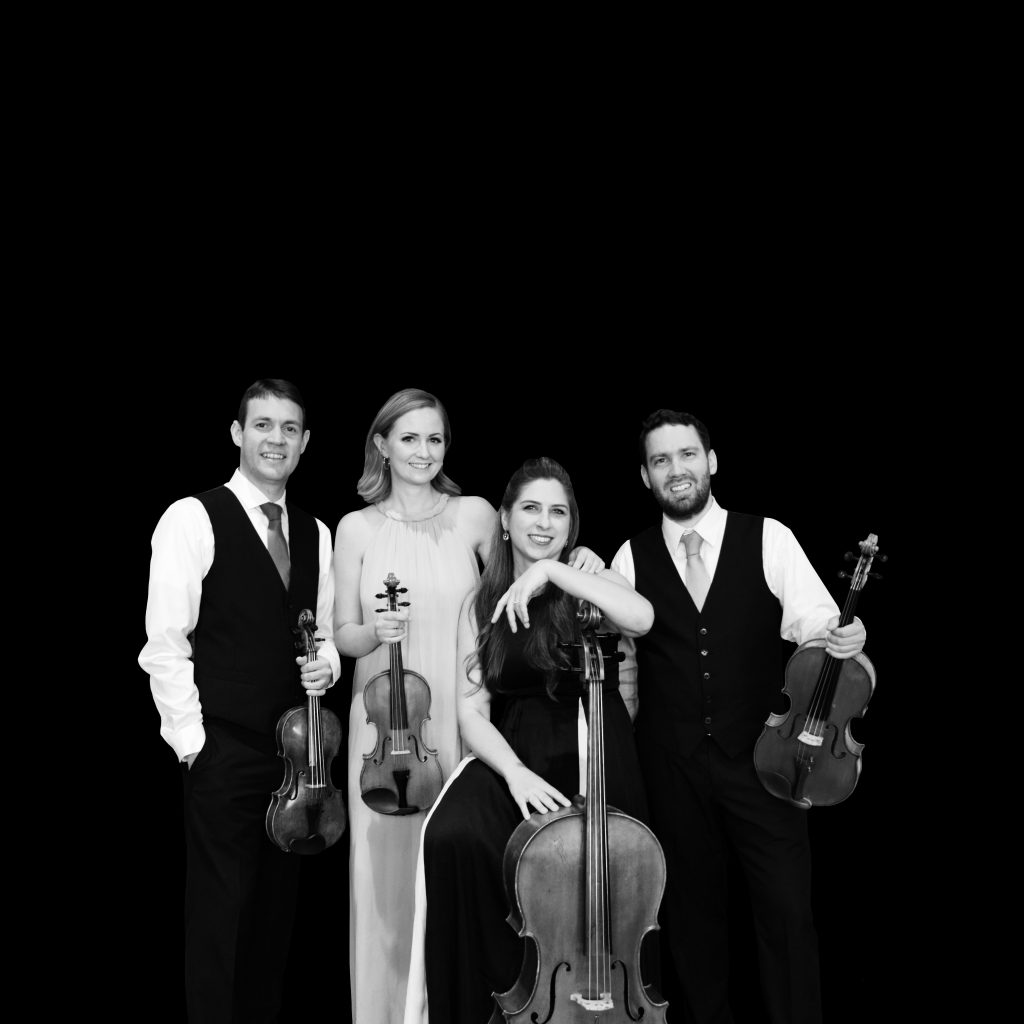Chicago’s Kontras Quartet and Malashock Dance: A Smashing Pas de Deux
Chicago’s outstanding Kontras Quartet has returned to San Diego in “High Strung” at the Lyceum Theatre, a stimulating collaboration between Art of Élan and Malashock Dance.

Kontras Quartet: Francois Henkins, Eleanor Bartsch, Jean Hatmaker and Ben Weber [Image courtesy of the Kontras Quartet]
To give the Malashock dancers greater space to explore across the wide expanse of the Lyceum stage, Kontras was nestled into a tight configuration at the back corner of the stage, but their sound easily suffused the room and propelled the dance troupe.
To open Friday’s program, choreographer John Malashock offered his “After Dust” from 2009, a spare dance that featured a female duo, followed by a male duo, followed by a mixed trio. The dancers’ precise, mirrored movements reflected the short, high-pitched tentative phrases of American composer Mary Ellen Childs’ “After Dust” from her larger work Dream House. Kontras brought an aptly astringent lyricism to her elegantly structured music with clear, transparent textures that suavely complemented the pair of dancers on that expansive stage.
When the first duo exited and the pair of male dancers came on stage, Kontras shifted to Oswaldo Golijov’s “Tenebrae,” a much darker piece with sinuous, modal themes—a piece the quartet had played last year at the Music Box. Cellist Jean Hatmaker’s deep, plangent themes and the sweet, winding cantilenas of violinists Eleanor Bartsch and Francois Henkins contrasted greatly with Childs’ terse melodic style, but I thought Malashock’s choreography worked equally well with both pieces.
Malashock presented his new work “Intimate Letters,” set to Leoš Janáček’s Second String Quartet, also know by the subtitle “Intimate Letters.” It is easy to see how the composer’s fondness for concise, agitated motifs, his propulsive fast movements, and piquant harmonic palette, as well as surprising shifts of mood and direction, would appeal to Malashock. What surprised me, however, is that the exact same choregraphy—generously engaging his whole troupe—worked equally well with Anontín Dvořák’s String Quartet No. 12, subtitled “American,” presented on the program’s second half. Dvořák’s sumptuous, broad Romantic themes and velvet harmonies, played with elegance and passion by Kontras, represent a completely opposite compositional approach to that of Janáček. The only apparent lack of congruence occurred when the dancers shifted into the vigorous choreography Janáček’s final movement when they were still in Dvořák’s third movement. Otherwise, the fit of the dance to each string quartet proved surprisingly congruent. If anything, Malashok’s style bloomed more convincingly in the Dvořák than in the Janáček, the quartet for which the dance was devised.
This program of dance and music was presented by Malashock Dance and Art of Élan at the Lyceum Theatre in San Diego’s Horton Plaza on Friday, May 31, 2019. It will be repeated in the same venue on June 1 & 2, 2019.

Ken Herman, excuse me for not realizing what a wonderful writer you are. I don’t often read music reviews otherwise I would have realized this much sooner. Really appreciate your descriptive choices.